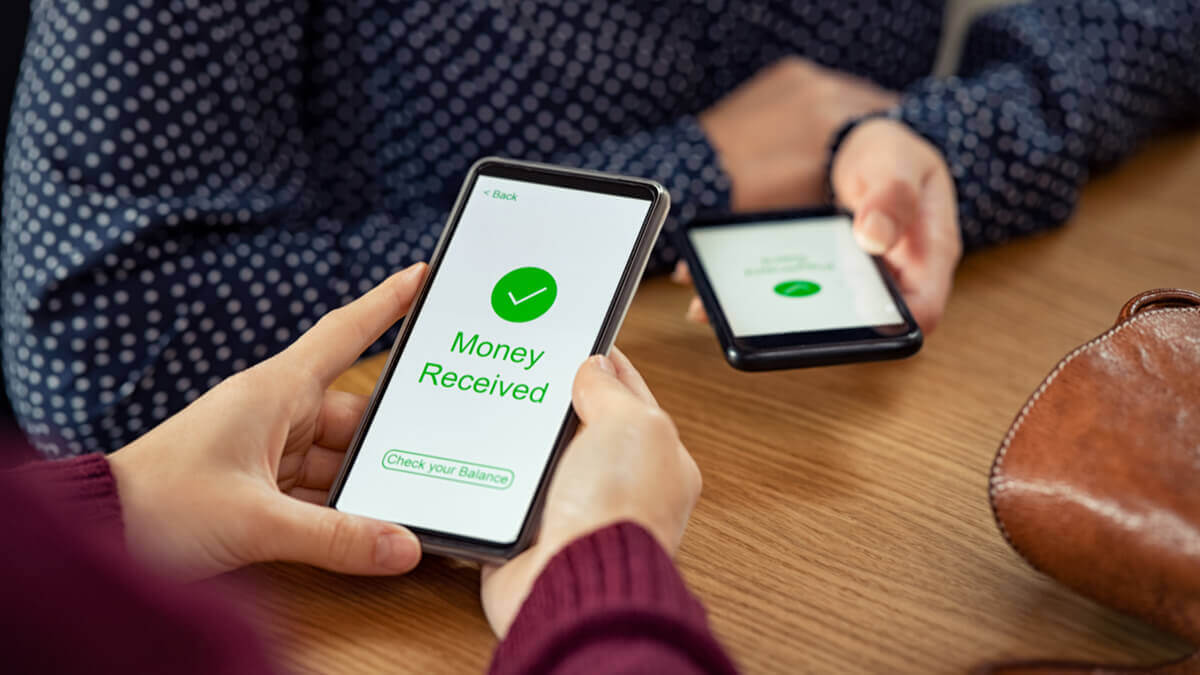Understanding the meaning of APY
Grasp the meaning of APY in banking and CDs with our in-depth guide. Discover how APY impacts your financial choices and maximizes your savings.

P2P transfers — also known as peer to peer money transfer or person to person payments — make it easy and fast to get money to friends and family. You can usually make payments from your phone, using your preferred peer to peer payment app, with nothing more than your friend’s email or phone number. It's easy, fast, and in some cases, free.
In this guide we’ll summarize how the p2p payment process typically works, and introduce a few popular P2P apps for you to consider.
One limitation of many P2P payment platforms is that you can’t send money overseas — so we’ll also introduce Wise as a neat solution which lets you pay people all over the world, fast and for a low fee.
| 📑 Table of Contents |
|---|
P2P stands for peer to peer, or person to person. In broad terms it describes a decentralized process where individuals can interact with each other without a third party acting as an intermediary. In the world of payments, P2P is usually talking about sending money easily and directly to family and friends.
P2P payments are usually set up using a smartphone app for convenience. You’ll be able to pick from a range of providers, which offer customers a way to send money in real time, from their bank account, credit or debit card, to friends or family. Some providers deposit the funds into the recipient’s bank accounts, in other cases, the recipient will need their own account with the provider to access their money.
The features and fees of different P2P apps can be quite varied, so it’s important to check out a few when you’re picking one out. Some have fees for payments — especially if you’re using a card to fund the transfer, and others can’t be used to send money to anyone with a non-USD account, for example. We’ll run through some popular options a little later.
If you’re looking to send money to a friend, you may have also heard of UPI — Unified Payment Interface. UPI is a fast and easy payment option used in India which looks set to roll out internationally soon, too. Learn more about UPI on the NPCI website¹.
P2P payment apps offer their own unique features — but what they all have in common is that they make it easy to get money quickly to someone, without needing to enter lots of bank details.
Usually all you’ll need is a user ID, email or phone number. That makes it a great way to split bills, share the costs of a taxi with friends, or pay back a family member who’s bought you dinner. It’s easier than carrying cash — and can be safer too.
Let’s look at some of the most popular P2P payments apps in the US today.
Wise is a specialist in online and mobile payments both domestically in the US, and internationally around the world. You can send money to 80+ countries in a range of currencies, using the mid-market exchange rate and low, transparent fees.
Funds are deposited into the recipient’s bank account directly so the beneficiary doesn’t need a Wise account to get their money. All you usually need to get started is the recipient’s email address.
| Please see Terms of Use for your region or visit Wise Fees & Pricing for the most up to date pricing and fee information |
|---|
Venmo² is one of the most popular P2P services in the US. It’s fast to send money, and comes with a social element which lets you send messages and emojis when you make payments.
It’s also possible to send payments to businesses in some cases, making this a great way to manage a lot of your day to day payments on the move. Venmo’s primary drawback is that it’s only available within the US, and payments can only be made in USD, so it’s no good if you want to pay back your friend based overseas.
Similar to Venmo, Zelle³ can only be used within the US, for USD payments. However, it’s a simple, free and easy solution if you need to send money to someone locally. Zelle’s key advantage over some other P2P payment options is that it integrates with many online banking services.
If you find your bank works with Zelle already you won’t need to download another app to use it, you can access everything you need right from your regular banking app. If your bank doesn’t offer Zelle already you can still use the service by getting the Zelle app.
Chances are that you’ve used PayPal⁴ for online shopping at some point — so you have an account already. You can also use PayPal to send money to people at home and overseas.
Payments are fast and can be set up online or in the PayPal app. It’s important to note that there are fees for some payment services — domestic payments funded with a card come with a cost, and the fees are extremely steep if you’re sending money abroad⁵.
Our final pick for P2P payments is Google Pay⁶. You can send money with Google Pay in the US, and also in India and Singapore. Google Pay integrates with other Google services for convenience, so you’ll be able to easily log into your account and see all your transactions.
P2P payments can be instant, or can take a day or two to arrive, depending on the provider you choose and where the money is going.
Delivery times will also depend on the type of app you choose. If you’re using something like PayPal where the funds are moved to the recipient’s P2P account, they’ll then need to withdraw the funds to their regular bank account, which is an extra step and can take a few days to process.
If you need to send money overseas, you need Wise.
Wise international payments use the mid-market exchange rate with low, transparent fees. Transfers can arrive instantly — with the vast majority landing within 24 hours, even when you’re moving your money to the other side of the world.
You could do even more with the Wise Account. Open your account online or using your smartphone, and you’ll be able to send money to contacts on Wise instantly — over 80 destination countries are covered, with the mid-market exchange rate every time.
While P2P payment apps are fundamentally safe, there are criminals and fraudsters who look for vulnerable people using P2P apps, and scams worth knowing about. There are also some common sense safety steps everyone should take — such as securing your account login, and double checking the details every time before you confirm a payment.
Individual P2P apps often publish their own fraud prevention information which can include the most up to date issues customers have flagged. Common scams include people pretending to be a family member in an emergency situation requesting an instant payment — before the victim realizes the deception they’ve already hit send, and the money's gone. Usually you can’t retrieve funds once sent.
| Here are a few tips to stay safe with P2P payments |
|---|
|
P2P payment services have made it easier and faster than ever to get money quickly to friends and family in the US and beyond. Use this guide to get started with person to person payment apps — and don’t forget to check out Wise as the best to send money internationally with just a few clicks.
Sources:
Sources checked on 04.19.2022
*Please see terms of use and product availability for your region or visit Wise fees and pricing for the most up to date pricing and fee information.
This publication is provided for general information purposes and does not constitute legal, tax or other professional advice from Wise Payments Limited or its subsidiaries and its affiliates, and it is not intended as a substitute for obtaining advice from a financial advisor or any other professional.
We make no representations, warranties or guarantees, whether expressed or implied, that the content in the publication is accurate, complete or up to date.

Grasp the meaning of APY in banking and CDs with our in-depth guide. Discover how APY impacts your financial choices and maximizes your savings.

Discover what FDIC insurance is, its limits, and the types of accounts it covers. Learn if your money is safe in banks, credit unions, and with CDs.

Understand the key differences between APR and APY, and how they affect your savings accounts, CDs, and even crypto investments.

Electronic money, or e-money, is a simple way to send, spend, and receive payments online. As we start to move away from cash or checks, e-money transfers are...

Wise is an online account that lets you spend abroad with your Wise card. To protect your account, we follow a set of rules set by regulatory agencies in...

Your full guide to finding the ACH routing number for your bank